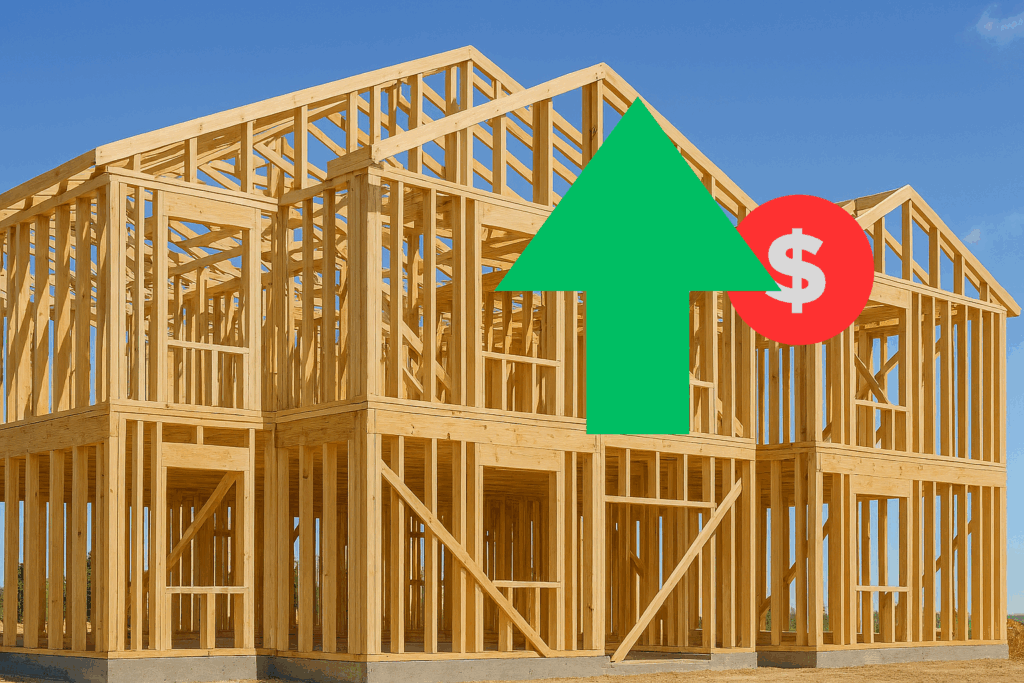Introduction: Why Tariffs Belong in Real Estate Conversation

When people think about buying a home, they usually focus on interest rates, inventory, and neighborhood vibes. But there’s a hidden force shaping those decisions: tariffs.
Tariffs—those taxes on imported goods—might seem like a distant political issue. But they have real, tangible effects on the cost of building materials, the price of appliances, and even the emotional confidence buyers bring to the table.
In this post, we’ll unpack how tariffs affect the broader economy, how those effects trickle down into housing affordability, and why buyers and sellers should pay attention to trade policy—even if they’ve never read a single headline about steel or lumber.
📦 What Are Tariffs, and Why Do They Matter?
Tariffs are taxes imposed by a government on imported goods. The goal is usually to protect domestic industries, punish foreign competitors, or rebalance trade deficits.
But here’s the catch: when tariffs go up, the cost of imported goods rises. That means:
- Builders pay more for materials
- Manufacturers raise prices on appliances and fixtures
- Consumers feel the pinch in everything from kitchen remodels to new home construction
Tariffs don’t just affect trade, they affect trust. They signal economic tension, uncertainty, and potential inflation. And in real estate, uncertainty is the enemy of action.
🧱 Tariffs and the Cost of Building a Home
Let’s start with the basics: building a home requires materials. Lots of them. Lumber, steel, aluminum, copper, glass, cement, and more. Many of these are imported—or rely on global supply chains.
Lumber Tariffs
In recent years, tariffs on Canadian softwood lumber have driven up prices dramatically. At one point, lumber costs added nearly $36,000 to the price of a new single-family home.
That’s not just a builder problem. It’s a problem with buyers. Higher material costs mean:
- Fewer new homes have been built
- Builders shift to smaller or less customized designs
- Prices rise across the board, even for existing homes
Steel and Aluminum Tariffs
Steel and aluminum are used in everything from HVAC systems to roofing and appliances. Tariffs on these metals increase costs for:
- Homebuilders
- Renovators
- Manufacturers of home goods
This leads to higher prices for new homes, slower construction timelines, and reduced affordability for buyers.
🛋️ Tariffs and the Cost of Furnishing a Home
Even after the sale closes, tariffs continue to affect buyers. Many home goods—furniture, lighting, and electronics are imported. Tariffs on Chinese goods, for example, have raised prices on:
- Sofas and beds
- Kitchen appliances
- Smart home device

This means buyers must budget more for move-in costs, which can affect their willingness to stretch on the purchase price.
💸 Tariffs and Inflation: The Hidden Threat
Tariffs don’t just raise prices—they contribute to inflation. When goods cost more, companies pass those costs to consumers. That leads to:
- Higher prices across the board
- Reduced purchasing power
- Increased pressure on interest rates
And as we covered in the previous post, rising interest rates directly affect mortgage affordability. So, tariffs can indirectly push rates higher, making homes less affordable—even if prices stay flat.
🧠 Buyer Psychology in a Tariff-Driven Economy
Real estate is emotional. Buyers don’t just look at numbers, they respond to signals. Tariffs send signals of economic tension, uncertainty, and potential recession.
This affects buyer behavior in several ways:
1. Hesitation and Delay
Buyers may wait to see how trade disputes are resolved. They fear:
- Job loss in affected industries
- Rising costs for homeownership
- Volatility in mortgage rates
2. Budget Recalibration
Buyers may lower their price range to account for:
- Higher furnishing costs
- Increased renovation expenses
- Inflation in other areas of life (groceries, gas, etc.)
3. Shift Toward Existing Homes
New construction becomes more expensive and uncertain. Buyers may prefer:
- Resale homes with fewer unknowns
- Homes that don’t require major upgrades
- Properties with existing appliances and fixtures
🏡 Seller Strategy in a Tariff-Impacted Market
Sellers aren’t immune to tariff effects. They must adjust their strategy to match buyer sentiment.
1. Pricing Realistically
If buyers are recalibrating budgets, sellers must:
- Avoid overpricing
- Highlight value and move-in readiness
- Offer incentives (e.g., including appliances, covering closing costs)
2. Staging for Confidence
In uncertain times, buyers crave stability. Sellers can:
- Stage homes to feel turnkey and complete
- Emphasize durability and quality materials
- Provide transparency on upgrades and warranties
3. Timing the Sale
Some sellers may rush to list before tariffs raise costs further. Others may wait, hoping for policy changes. Either way, understanding the economic backdrop helps guide timing decisions.
🌎 Global Trade, Local Impact
Tariffs are part of a larger story: globalization, supply chains, and economic diplomacy. When trade tensions rise, local markets feel the impact.
For example:
- A tariff on Chinese electronics affects smart home installations
- A dispute with Canada affects lumber prices in Florida
- A steel tariff affects roofing costs in Arizona

Real estate is local—but the forces shaping it are global. Buyers and sellers who understand this can make smarter, more confident decisions.
🔍 A Buyer’s Journey in a Tariff-Driven Market
Let’s meet Sarah, a first-time homebuyer in Tampa. She’s approved for a $450K mortgage and wants a new build. But she learns:
- Lumber prices have added $30K to the base price
- Appliances are backordered due to trade restrictions
- Interest rates are rising to combat inflation
Sarah recalibrates. She chooses a resale home with updated appliances and negotiates seller credit to cover closing costs. She feels confident—not because the market is perfect, but because she understands the forces at play.
🧭 Navigating Tariff Turbulence: Tips for Buyers and Sellers
For Buyers:
- Research material costs and supply chain delays
- Budget for furnishings and upgrades
- Consider resale homes with fewer unknowns
For Sellers:
- Price competitively based on buyer affordability
- Highlight move-in readiness and included features
- Stay informed on trade policy and market sentiment
💬 Tariffs as a Hidden Compass
Tariffs may seem distant, but they shape the real estate landscape in subtle and powerful ways. They affect costs, confidence, and choices. By understanding how trade policy influences the economy, buyers and sellers can move with clarity—not confusion.
Whether you’re navigating a new building, prepping a resale, or simply watching the market, keep an eye on the headlines. The next tariff announcement might not just affect Wall Street—it could affect your street.
📊 Tariffs & Housing Prices: Key Stats and Trends
🪵 Lumber Tariffs and Construction Costs
- The U.S. imposed tariffs on Canadian softwood lumber, which accounts for 83% of U.S. lumber imports.
- These tariffs have added an average of $10,900 to the cost of building a single-family home in 2025.
- Lumber price spikes have contributed to slower new home construction and increased pressure on resale inventory.
🏗️ Broader Tariff Landscape
- In April 2025, the U.S. introduced a 10% baseline tariff on all imports, with up to 125% tariffs on Chinese goods.
- Materials like steel, aluminum, and fixtures—already subject to 25% tariffs—have seen further price hikes, affecting everything from roofing to appliances.
📉 Impact on Home Sales and Affordability
- The 30-year fixed mortgage rate rose to 6.5%, up from just under 6% in late 2024, contributing to affordability challenges.
- Existing home sales dropped by 4.9% (seasonally adjusted) in January 2025.
- Inflationary pressure from tariffs has led to higher home prices nationally, per the FRED S&P U.S. National Home Price Index.
- According to Redfin, over 30% of Americans are postponing major purchases, including homes, due to tariff-related economic uncertainty.
🏙️ Regional Disparities
- Cities like Milwaukee, Oklahoma City, and Memphis—where multi-family housing permits surged—are seeing slowed development and rising rents due to reliance on imported materials.
